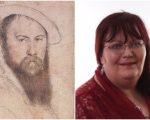
We’ve just been alerted to the fact that the US times given for the live chat were incorrect so here are the correct times – our apologies. We’ve emailed this out too.
[Read More...]
We’ve just been alerted to the fact that the US times given for the live chat were incorrect so here are the correct times – our apologies. We’ve emailed this out too.
[Read More...]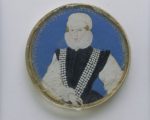
In today’s Claire Chats video, Claire talks about Mary Dudley, Lady Sidney, and her loyalty and sacrifice in serving Queen Elizabeth I.
[Read More...]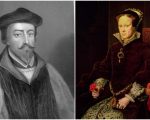
There are two important “on this day in history” events for today and they’re both from the reign of Mary I.
On 30th March 1555, Robert Ferrar, Bishop of St David’s, was burnt at the stake at Carmarthen. It is not known when Ferrar was born but he came from Midgley, in Halifax, and had found a living at St Oswald’s Augustinian priory in Yorkshire by the early 1520s. He studied at Cambridge and Oxford, graduation from Oxford BTh in 1533 and it was while he was at Oxford that he became involved in selling Protestant books, something for which he was imprisoned twice.
[Read More...]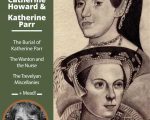
The full edition of our 68-page April edition of Tudor Life Magazine. The theme this month is two of Henry VIII’s fascinating wives, Catherine Howard & Katherine Parr
[Read More...]
On 26th/27th March* 1555, nineteen-year-old William Hunter, a silk-weaver’s apprentice, was burned at the stake in Brentwood, Essex, for heresy.
His story is told in John Foxe’s Book of Martyrs and you can read the chapter on Hunter online at http://www.exclassics.com/foxe/foxe275.htm, but here is brief overview…
William Hunter was an apprentice to silk-weaver Thomas Taylor in London when Mary I came to the throne. After refusing to attend mass and receive communion at Easter 1554, he was threatened with being hauled before the Bishop of London.
[Read More...]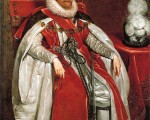
On this day in history…
27th March:
1489 – The Treaty of Medina del Campo was signed between England and Spain. One part of it was the arrangement of the marriage between Arthur, Prince of Wales, and Catherine (or Catalina) of Aragon. It was signed by Spain on this day and ratified in 1490 by Henry VII.
1539 – Burial of George Talbot, 4th Earl of Shrewsbury, at St Peter’s Church, Sheffield. He is known for his loyalty to the King during the Pilgrimage of Grace uprisings, which was seen as crucial to the failure of the rebellion. His offices under Henry VIII included Chamberlain of the Exchequer, Lieutenant of the Vanguard in the 1513 French campaign and Lieutenant-General in 1522 in the Scottish borders.
1555 – Burning of William Hunter, Protestant martyr. Nineteen-year-old Hunter got into trouble when he was found reading the Bible in Brentwood Chapel.

I thought I’d do something different for this week’s quiz and create a wordsearch.
Simply click on the link to enlarge and print out. Have fun!
[Read More...]
In Tudor England, the New Year began 25th March, a day known as Lady Day or the Feast of the Annunciation of the Blessed Virgin. It was a feast day commemorating the day that the Virgin Mary was first told by the Angel Gabriel that she was carrying Jesus. It is, of course, nine months before Christmas Day, the day in which Christ was born.
Lady Day was the first day of the calendar year in England until 1752, when the first day of the year was changed to 1 January and the Gregorian Calendar replaced the Julian Calendar. Although the calendar year officially started on 25 March in Tudor times, New Year’s gifts were still given on 1 January, which came from the Roman tradition of New Year.
[Read More...]
In today’s Claire Chats video, I talk about Arthur Brooke and his work “The tragicall historye of Romeus and Juliet, written first in Italian by Bandell, and nowe in Englishe by Ar. Br.” which was used as a source by William Shakespeare for his play “Romeo and Juliet”.
[Read More...]
On this day in history, the 24th March 1603, Queen Elizabeth I died at Richmond Palace aged 69, bringing the rule of the Tudor dynasty to an end. Elizabeth I had reigned for 44 years and 127 days and her reign was known as “The Golden Age”. She was the longest reigning Tudor monarch.
It is said that the execution of her former favourite, Robert Devereux, the Earl of Essex, on the 25th February 1601 had a huge impact on Elizabeth. She had already lost her great love Robert Dudley in 1588, her good friend Blanche Parry in 1590, and her friend and adviser William Cecil, Lord Burghley, in 1598. It seemed that all those she loved and depended on were dying and leaving her. Her grief, combined with a belief that she was losing her grip on her court and country, led to her becoming severely depressed.
[Read More...]
The Mary Rose Trust has just let me know that they have been shortlisted for a number of awards and would really appreciate it ifpeople who have enjoyed visiting the Mary Rose would help by voting for them.
[Read More...]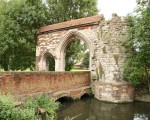
On this day in history, 23rd March 1540, Waltham Abbey was surrendered to the Crown. It was the last abbey to be dissolved in Henry VIII and Thomas Cromwell’s dissolution of the monasteries.
Here is the record from Letters and Papers:
“Surrender of the monastery and all its possessions in cos. Essex, Midd., Herts, Camb., Line, Norf., Suff., Berks, Oxon, Bucks, Beds, Kent, Sussex, Surr., Soms., Dors., Hants., Wilts., and Glouc., and the city of London and elsewhere in England, Wales, and the marches thereof. 23 March, 31 Hen. VIII. Signed by Robert the abbot, and 17 others…
[Read More...]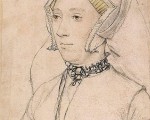
Today is the anniversary of the traditional date given for the birth of Katherine Willoughby (married names Brandon and Bertie), Duchess of Suffolk, and leading patroness of Reform, on 22nd March 1519.
She is someone who appeals to me because of her patronage of the reformed faith and also because of the story of her dog. Martyrologist John Foxe, in his Acts and Monuments, writes of how Stephen Gardiner, Bishop of Winchester, called Katherine’s second husband, Richard Bertie, before him in Mary I’s reign to ask him about his religion. Here is what Foxe says about Gardiner’s words to Bertie:
[Read More...]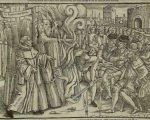
On this day in history, Archbishop Thomas Cranmer was burned at the stake in Oxford. He had recanted his Protestant faith five times, but it didn’t stop his execution from being scheduled.
On the day of his execution, Cranmer was taken to the University Church Oxford to make a final public recantation. He agreed to this, but after praying and exhorting the people to obey the King and Queen, he renounced his recantations and professed his true Protestant faith. He vowed that his right hand, the hand that he had used to write his recantations which were “contrary to the truth which I thought in my heart, and written for fear of death, and to save my life”, would be the first part of him burned in the fire.
[Read More...]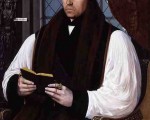
Thomas Cranmer, Archbishop of Canterbury, was born on 2nd July 1489 in Aslockton, Nottinghamshire, England. He was the son of Thomas Cranmer and his wife Agnes (nee Hatfield). He had an older brother, John, a younger brother, Edmund, and a sister called Alice.
Cranmer’s father died in 1501. His mother sent Cranmer to grammar school and then in 1503, when he was fourteen years old, he was sent to Jesus College, Cambridge, where he studied for a Bachelor of Arts degree. His degree, which comprised logic, philosophy and classical literature, took him eight years to complete and he followed it with a Masters degree, studying the humanists. After obtaining his Masters degree in 1515, Cranmer he was elected to a Fellowship of Jesus College. Following his marriage to his first wife, Joan, he was forced to relinquish his fellowship and became a reader at Buckingham College. Sadly, Joan died in childbirth and the child also died.
[Read More...]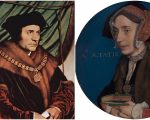
What I loved about researching my book On This Day in Tudor History was the fact that I kept stumbling across people and events I knew very little about, and people and events I wanted to know more about. One of the people that piqued my interest was Mary Roper Clarke Bassett (or Basset), the 16th-century scholar and translator whose education was praised by the likes of Roger Ascham and Nicholas Harpsfield, and who presented Queen Mary I with a copy of five books of Eusebius’s Ecclesiastical History which she had translated from Greek into English.
[Read More...]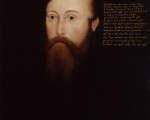
Thomas Seymour, 1st Baron Seymour of Sudeley, was born in or before 1509 and was the fourth son of Sir John Seymour and his wife Margery Wentworth. He would have grown up at the Seymour family home of Wolf Hall (also known as Wulfhall) in Wiltshire. He was one of a brood of six sons and four daughters, and his siblings included Edward Seymour, Lord Protector; Jane Seymour, Henry VIII’s third wife and queen consort; Elizabeth Seymour, who married three times: Sir Anthony Ughtred, Gregory Cromwell and John Paulet; and Sir Henry Seymour.
Nothing is known of his early life, but Thomas started his court career by serving courtier and diplomat, Sir Francis Bryan, in whose service he was in by 1530. The Seymour family began to rise in favour at Henry VIII’s court as the king started courting Jane Seymour in spring 1536 and then married her on 30th May 1536, following the execution of Queen Anne Boleyn. Thomas joined Henry VIII’s privy chamber in October 1536 and while his sister was queen his rewards included being knighted and being named joint master steward of Chirk and Holt. In 1538, he benefited from the dissolution of the monasteries by receiving land once owned by monasteries in Essex, Hampshire and Berkshire. He was involved in diplomatic missions to France, Vienna and the Low Countries in 1538, 1542 and 1543 respectively.
[Read More...]
On this day in history…
20th March
1469 – Birth of Cecily, Viscountess Welles and princess, also known as Cecily of York, third daughter of Edward IV and Elizabeth Woodville. She was born at Westminster Palace. A marriage alliance with Scotland was made in 1473 promising Cecily to James, the infant son of James III, but Cecily was still unmarried at her father’s death in 1483. Her uncle, Richard III, arranged Cecily’s marriage to Ralph Scrope of Upsall, but Henry VII dissolved the marriage in 1486 and she married John Welles, Viscount Welles, the King’s half-uncle. After Welles’ death in 1499, Cecily went on to marry Thomas Kyme of Friskney. Cecily died in 1507.
1544 – Baptism of Cuthbert Mayne, Roman Catholic priest and martyr. He was hanged, drawn and quartered at Launceston on 30th November 1577 after being charged with traitorously getting hold of a papal bull and publishing it at Golden Manor, defending the authority of the Pope, purchasing a number of Agnus Dei and giving them to people, and celebrating the Catholic mass.
1549 – Thomas Seymour, 1st Baron of Sudeley and Lord High Admiral, husband of the late Dowager Queen Catherine Parr and brother of Queen Jane Seymour and Protector Somerset, was executed after being charged with thirty-three counts of treason.
1555 – Burial of John Russell, Earl of Bedford, courtier and magnate, at Chenies, following his death 14th March. It was a lavish funeral with three hundred horses, all in black trappings.
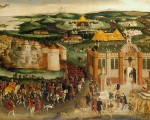
Get those little grey cells working today with this quiz on Tudor dates and events. Good luck!
[Read More...]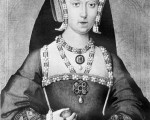
On this day in 1496, Henry VIII’s beloved sister, Princess Mary Tudor, was born at Richmond Palace. She was the youngest of Henry VII and Elizabeth of York’s children to survive infancy and was sister to Prince Arthur, Princess Margaret and Prince Henry.
Mary was renowned for her beauty, being described as “a Paradise – tall, slender, grey-eyed, possessing an extreme pallor” by the Venetian ambassador, and her motto was “La volenté de Dieu me suffit” (The will of God is sufficient for me).
[Read More...]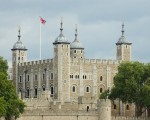
On this day in history, 18th March 1554, Palm Sunday, the twenty-year-old Lady Elizabeth (future Elizabeth I) was taken to the Tower of London, the place where her mother had been imprisoned and where her mother and one of her stepmothers had been executed.
We can only imagine the sheer terror she felt when Mary I’s council turned up at her doorstep on the 16th March 1554 to formally charge her with being involved in Wyatt’s Rebellion, the revolt which had taken place in January and February 1554 and which had been led by Sir Thomas Wyatt the Younger. Elizabeth was told that Mary wanted her sister taken to the Tower for questioning and that she would be escorted there the next day.
[Read More...]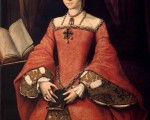
The Tide Letter was written by Lady Elizabeth (the future Elizabeth I) to Mary I when she was arrested after Wyatt’s Rebellion on 17th March 1554. Elizabeth wrote it when she was just about to be taken to the Tower of London for incarceration and it is called the Tide Letter because as Elizabeth wrote the letter the tide of the Tames turned and she could no longer be taken to the Tower by boat that day. She was taken to the Tower on 18th March, Palm Sunday.
The letter was written in haste but Elizabeth still managed to write an eloquent and well-argued letter, which unfortunately went ignored by Mary. It did, however, delay her imprisonment by one day.
[Read More...]
Who is the greatest Tudor monarch? Whose achievements outweighed their failures?
In today’s Claire Chats video, I examine the achievements and failures of each of the Tudor monarchs and ask you to vote on which one you think was the greatest.

Just to let you know that the date has changed for the live chat session with author Wendy Dunn on the Tudor Society chatroom. It will now take place at 11pm UK time on Friday 31st March.
[Read More...]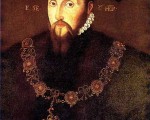
The fifth article in Sarah Bryson’s series on prominent Tudor courtiers…
Edward Seymour, Duke of Somerset is one of the most well-known of Henry VIII’s courtiers. Although the duke was most influential under the reign of his nephew, King Edward VI, it was during the reign of Henry VIII that Seymour started his ascent at the Tudor court.
The exact date of Edward’s birth has not been recorded, but it is believed that he was born around 1500 at the family’s home of Wolf Hall, Wiltshire, to Sir John Seymour and Margery Wentworth. John and Margery had ten children: six sons (John, Edward, Henry, Thomas, John and Anthony) and four daughters (Jane, Elizabeth, Margery and Dorothy). Edward Seymour was descended from the ancient family lines of the Percys and Cliffords, and his father served both King Henry VII and King Henry VIII as Sheriff of Wiltshire and Sheriff of Somerset and Dorset, cementing the family’s loyalty to the Tudors.
[Read More...]
To celebrate 2017 being declared the “Year of Literary Heroes” by Visit England, the Historic Houses Association (HHA) has just launched a new online literary trail which includes over forty properties around the UK that have links to literary figures, books and plays.
In the press release, the HHA says:
“Authors as diverse as D.H. Lawrence, Charlotte Brontë, Roald Dahl and George Eliot are all connected with HHA Member houses. Our varied Member houses are all independently owned and many have been in the same families for generations.
Perhaps you’ll be shown around by a descendant of one of these literary greats? Maybe the author will sign your book? Can you find the desk where your favourite novel was written?”
[Read More...]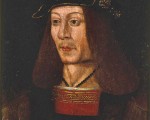
On this day in history…
13th March:
1540 – Death of Henry Bourchier, 2nd Earl of Essex. He died after falling off a horse, and his title was given to Thomas Cromwell. His daughter, Anne, married Sir William Parr, brother of Queen Catherine Parr.
1543 – Death of Sebastian Giustinian, the Venetian diplomat. He died in Venice at the age of eighty-three. Giustinian served as the Venetian ambassador to England from 1514 to 1519, and wrote 226 letters during his embassy there. He became ambassador to France in 1526 and procurator of St Mark in 1540.
1594 – Death of John Woolton, Bishop of Exeter, from asthma at the bishop’s palace in Exeter. He was buried in the cathedral choir.
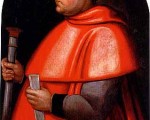
Well, this week you have a 50% chance of being right with each question so good luck! I do hope you enjoy this little Tudor history quiz.
[Read More...]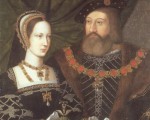
This week’s video is by Sarah Bryson and is on Mary Tudor, Queen of France, daughter of King Henry VII and sister of King Henry VIII.
[Read More...]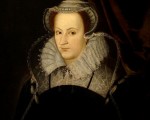
In the live chat last Saturday I mentioned how I’d been lucky enough to hear historian John Guy, author of My Heart is My Own: The Life of Mary Queen of Scots, talk about Mary, Queen of Scots, a few years ago on the Anne Boleyn Files Executed Queens Tour and that I’d try and dig my notes out to share with you.
[Read More...]